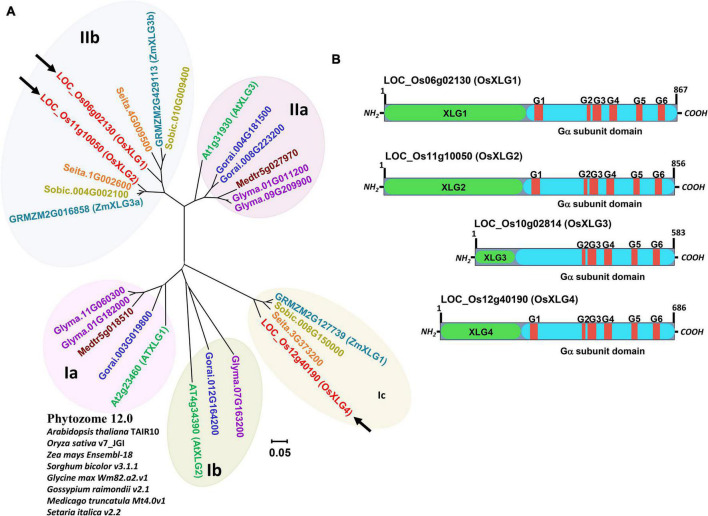FIGURE 1.
Phylogenetic tree and protein structure of rice XLGs. (A) Phylogeny of XLG protein sequences. Sequences were retrieved from Arabidopsis thaliana TAIR10 (green), O. sativa v7.0 (red), Zea mays Ensembl-18 (turquoise), Sorghum bicolor v3.1.1 (dark yellow), Glycine max Wm82.a2.v1 (purple), Gossypium raimondii v2.1 (blue), Medicago truncatula Mt4.0v1 (dark red), and Setaria italica (orange) from Phytozome 12.0 (https://phytozome.jgi.doe.gov/). LOC_Os06g02130, LOC_Os11g10050, and LOC_Os12g40190 (in red fonts with black arrow) are named in this paper as OsXLG1, OsXLG2, and OsXLG4. The tree was constructed by the neighbor-joining method using MEGA7 (Kumar et al., 2016). (B) Schematic diagram of rice XLG domain architecture. Domains unique to the XLG family are shown in green boxes. Turquoise color represents homologous Gα subunit sequence. Conserved amino acid sequences shown in red rectangle with G#s represent motifs involved in GTP-binding.

